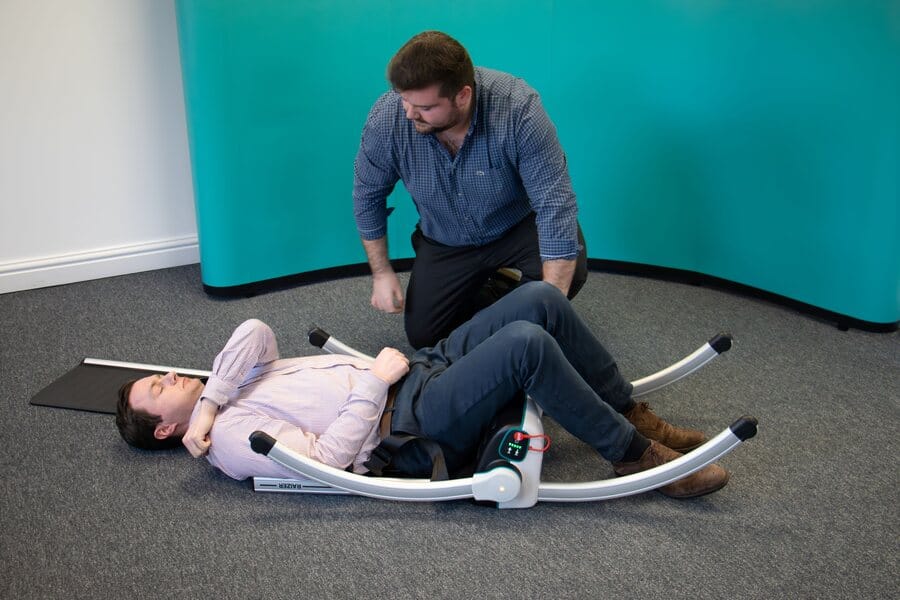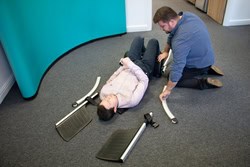EXCLUSIVE: The importance of developing solutions to prevent the long-term consequences of falls

Aaron Craven, founder of the OT4Life Occupational Therapy service, discusses the importance of developing solutions which help to reduce the knock-on effects of falls. Falls can lead to long-term consequences for the individual, causing pressure ulcers to develop and even death in some cases, while also putting pressure on the cash-strapped NHS…
With over 250,000 falls recorded by the NHS every year, the pressure it puts the ambulance services, emergency responders, and other healthcare professionals under is extreme – particularly at this time of the year. These figures have also been rising since the Covid pandemic, resulting in 20 per cent of the falls causing ‘long lies’, meaning the individual has been laid on the floor for over an hour before help can reach them.
The knock-on effect of this happening can then result in pressure ulcers developing, over 12 days in hospital as a result, and a scary statistic that over 50 per cent of people over 65 that fall then go on to die within the next six months.
At Vivid Care we continually review statistics like this as part of the research we do into solutions to help both reduce these figures, but also source equipment to improve the service either the NHS or local care providers can provide.
One of the new and ground-breaking pieces of falls-response devices we provide is the Raizer Lifting chair, which we are now supplying to the NHS, care homes and domiciliary care environments. Operated by just one person, they are able to move the individual back into a seated position without uncomfortable lifting or risk to the person helping the fallen.
Rapid Response Occupational Therapists have been provided with Raizers, and during the ambulance strikes this proved invaluable support for them. Aaron Craven is the founder of the OT4Life Occupational Therapy service.
He added, “Without doubt I come across a multitude of people that fall and need only getting up from the floor with no adverse effects or further issues. However, on occasion I am called to seriously ill patients who without the appropriate support would experience health deterioration very rapidly causing potential death.”
“On one occasion the call came through for a gentleman in the final weeks of life with exacerbated COPD. His carers were present, and he had fallen from his chair and was on the floor with carers with him. I do feel I managed to save that man’s life that day and it was due to the innovation of the Raizer II and despite the situation with ambulance strikes and NHS shortages, it allows for a single-handed care approach to facilitate moving and handling in transfers for both user and operator. As we all know, no one falls in the ideal places but the versatility of the Raizer allows me to get into the smallest spaces and stand people who are able with ease.”
The Raizer also reduces risk for emergency responders and ambulance crews, of injuring fallen individuals when lifting them. For the patient, reduced anxiety levels and immediate comfort are important, but so is providing them with dignity helping them back to their feet.
Working with the Scottish Ambulance Service (SAS), one of their crew actually wrote an academic assignment around the benefits of the Raizer, he was so impressed at the difference it made to their working day.
Within this, Graham Wallace stated “The Raizer is not just a ‘lifting cushion’, it is a ‘lifting chair’, and having seen it in action, I can confirm it is indeed a single clinician operator unit. It supports the patient throughout the lift as it has added back support, and with the addition of accessories such as the head rest, provides a level of comfort and physical support. In summary, the Raizer reduces the risk of injury presented to crews while attending falls patients, it reduces time on scene due to its effectiveness and reduced set up/operating times, it reduces patient anxiety and provides more stability and support for our patients.”
Providing this type of equipment to the Yorkshire Ambulance Service has resulted in them donating some of their Raizers to local care homes enabling carers to move the residents into a comfortable position themselves. Collaboration is definitely the way forward, and in Hull they now have a dedicated team of falls responders, Hull’s FIRST (Falls Intervention Response Safety Team) who are now the first point of call in the event of a fall being reported, to remove the overwhelming pressure off the NHS and ambulance service.
Through working together with the NHS, care homes and the companies providing the new technology, we are all working together to improve the lives of the elderly and reduce the pressure on the NHS. Having equipment already in place at places like care homes, enables them to immediately act when someone falls, and will help the NHS longer term. Receiving such positive feedback directly from ambulance crews using the equipment is also so beneficial, because we know we are doing our job right too.



